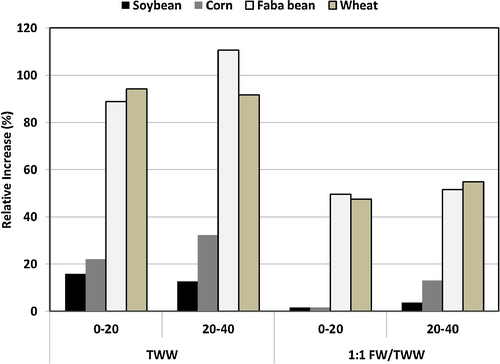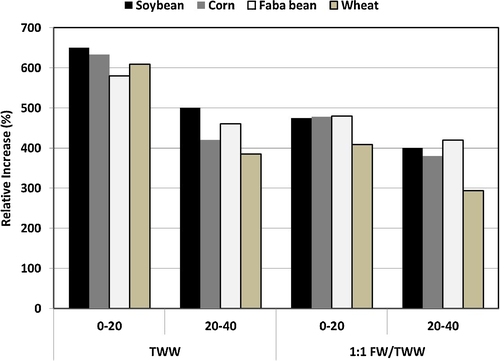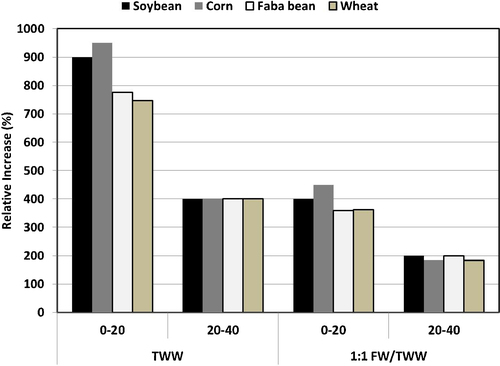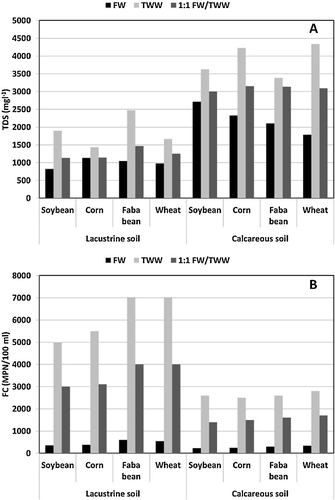Figures & data
Table 1 The main chemical and physical characteristics of the soils under study.
Table 2 Some water quality parameters of irrigation water.
Table 3 Some chemical and biological characteristics of lacustrine soil cultivated with soybean, corn, faba bean or wheat as influenced by treatment wastewater (TWW), fresh water (FW) and mix of TWW and FW in equal proportions (mixed water).
Table 4 Some chemical and biological characteristics of calcareous soil cultivated with soybean, corn, faba bean or wheat as influenced by treatment wastewater (TWW), fresh water (FW) and mix of TWW and FW in equal proportions (mixed water).






